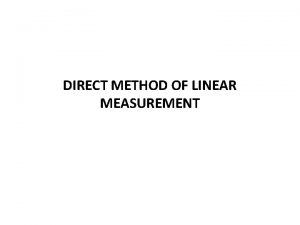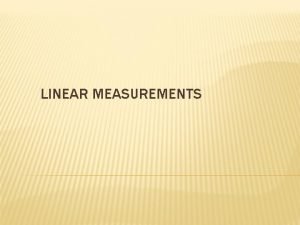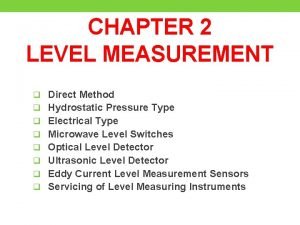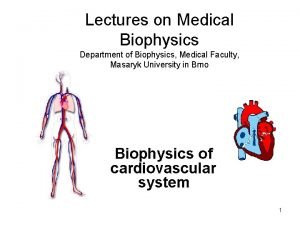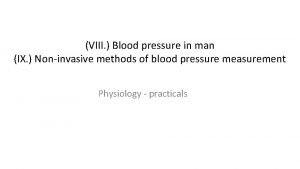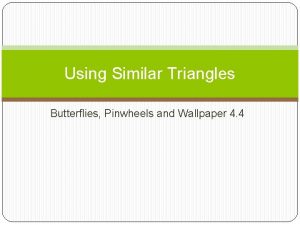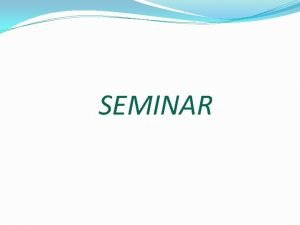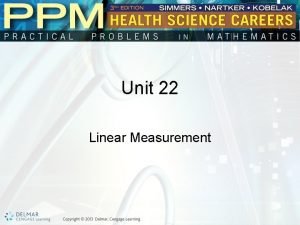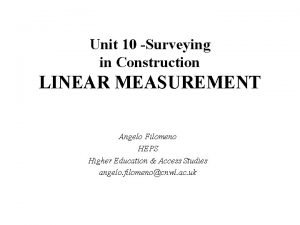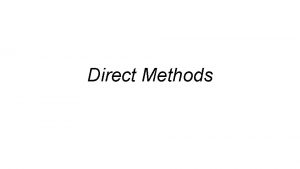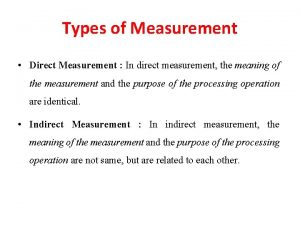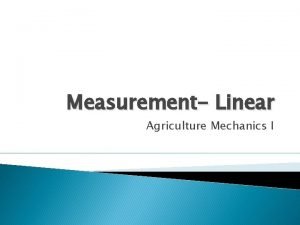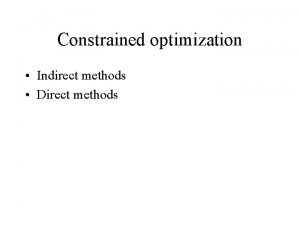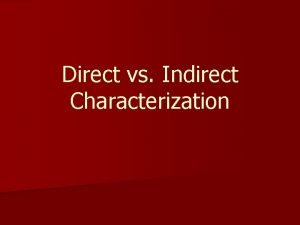DIRECT METHOD OF LINEAR MEASUREMENT Various methods coming

















- Slides: 17

DIRECT METHOD OF LINEAR MEASUREMENT

Various methods coming under the direct method of linear measurement are: Direct Method # 1. • Linear Measurement by Pacing Direct Method # 2. • Linear Measurement by Passometer • Linear Measurement by Pedometer • Linear Measurement by Odometer and speedometer • Linear measurement by perambulator

Direct Method # 3 • Judging Distance and Time Measurements: Direct Method # 4. • Linear Measurement by Chaining

Direct Method # 1. Pacing Method: The method consists in walking over a line which have been previously measured and counting the number of paces. However, the surveyor should standardize his pace length by practice. By knowing the average pace length distance may then be obtained by multiplying the number of paces with the average pace length.

Measurement by Pacing • The method is generally useful where approximate results are required such as for reconnaissance survey, locating details in small scale mapping etc.

Standardization of pace length • Try to walk straight • Speed should be normal In pacing length of pace varies with the individuals and also with the nature of ground and speed of pacing.

Direct Method # 2. Instrumental Method: Some instruments like Speedometer of an automobile, Pedometer etc. may also be employed to find the distance approximately. Speedometer gives better results than pacing provided the route is smooth as along a highway.

Passometer • The passometer is a watch like instrument that is carried on the person’s pocket or tied on the man’s leg. This instrument records the paces when the man moves from one point to another. • This technique hence overcomes the monotony and strain in counting the paces by the surveyor. The distance is calculated as the product of the number of paces and the average length of the pace.


Pedometer • Pedometer is a similar device like passometer that automatically measures the distance. A pedometer is best in measuring the vertical distances.


Odometer • Odometer is an instrument that measures the number of revolutions of a wheel. The number of revolutions taken to cover the length multiplied by the circumference of the wheel gives the value of the distance covered. • This instrument does not provide accurate results on an undulating surface. When the surface is smooth, the speedometer used in the vehicles can be used.


Speedometer • Follows the principle of odometer and directly gives the speed.

Perambulator • A surveyor's instrument for measuring distances. It consists of a wheel arranged to roll along over the ground, with an apparatus of clockwork, and a dial plate upon which the distance traveled is shown by an index.

Direct Method # 3. Judging Distance and Time Measurements: For very approximate results such as in reconnaissance survey, the distances may be determined by judgment only. The distances are also roughly determined by knowing the average time taken per km by a person at walk or a horse at trot and the total time taken to cover that distance.

Direct Method # 4. Chaining: The operation of measuring distance with the help of a chain or a tape is called chaining. It is the most accurate of all the methods of measuring distance and is commonly used. Ordinarily a chain is used for measuring the distance but where great accuracy is required, a steel tape is invariably used.
 Direct method of distance measurement
Direct method of distance measurement Direct methods for sparse linear systems
Direct methods for sparse linear systems Speedometer
Speedometer Direct method of level measurement
Direct method of level measurement Direct method of blood pressure measurement
Direct method of blood pressure measurement Merits and demerits of morphological classification
Merits and demerits of morphological classification Size
Size Advantages and disadvantages of being a teacher
Advantages and disadvantages of being a teacher Amoxicillin
Amoxicillin The cyanmethemoglobin method measures
The cyanmethemoglobin method measures Map formula bp
Map formula bp Similar triangles
Similar triangles Inlay wax pattern fabrication
Inlay wax pattern fabrication Meaning of bilingual method
Meaning of bilingual method Principles of direct method
Principles of direct method 3 units of linear measurements in metric system
3 units of linear measurements in metric system Sine bar advantages and disadvantages
Sine bar advantages and disadvantages Taping surveying
Taping surveying
